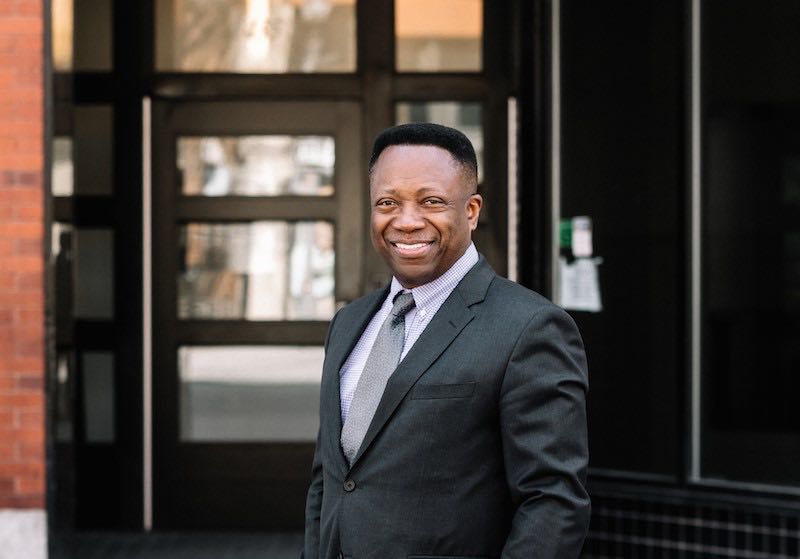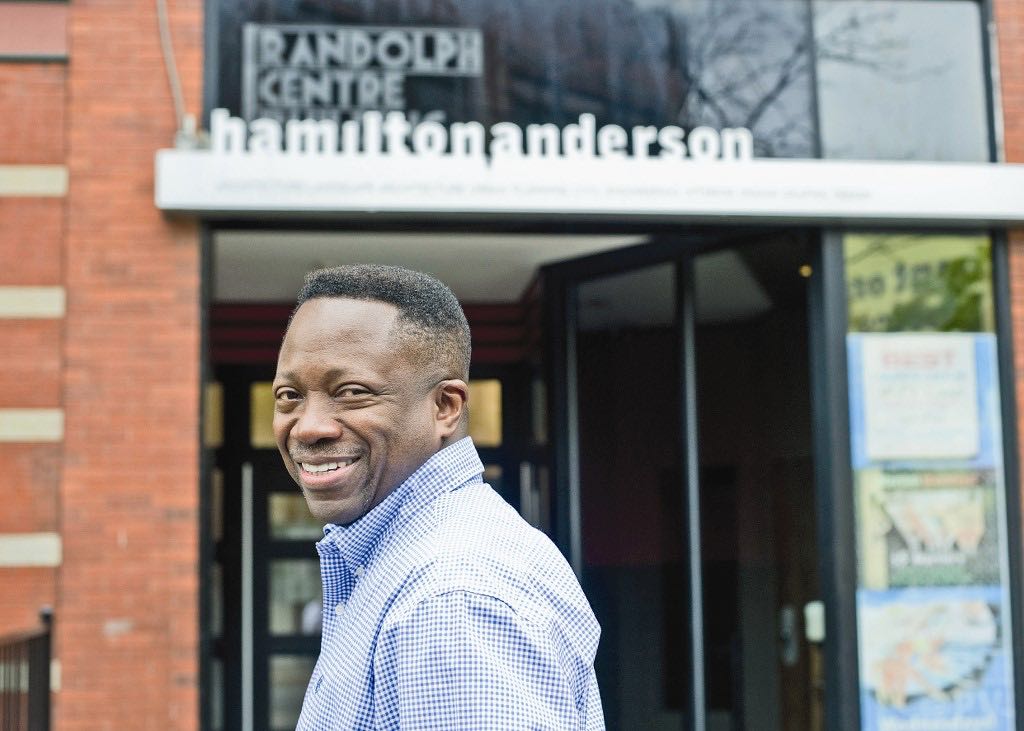
Architect Rainy Hamilton Jr., FAIA, NOMA, grew up in the area of Joy Road and Wyoming in Detroit. And if you know anything about the present-day Joy Road area, the 48204-zip code is one of the most dangerous neighborhoods in the nation. Hamilton spoke of a nicer time in his old neighborhood during the 1960s, when the crime rate was not as high, the lawns were manicured, and the streets were lined with elm trees.
“Joy Road and Wyoming, and Tireman, when my family moved into the neighborhood when I was 6 or 7-years-old, was all white,” said Hamilton. “It was a large Jewish population in that Joy Road, Oakman area then and I was the only African-American at Barton Middle School, that I could recall. My father would walk halfway to the school to greet me and walk me home and he told me that since I was the only African-American student among the white students, he could easily pick me out of the crowd.”
“That neighborhood was beautiful in that day. Over the years, the neighborhood has declined, as a lot of neighborhoods in Detroit have. It’s a different world over there now. There are a few stable blocks and others are in disrepair. It’s really sad.”
Hamilton would love to see his old neighborhood restored to the days of his childhood, growing up on Roselawn Street. That has been his vision for all of Detroit for the past 24 years, as principal of Hamilton Anderson Associates. Ever since his mother bought him a model train as a child and he first studied drafting at Charles Drew Middle School, then architecture at Cass Technical High School in 1974 and the University of Detroit Mercy, Hamilton wanted to be a builder of Detroit.
“That has been my goal and dream my entire life,” said Hamilton. “What I am thrilled about right now, is that we’re actually building new neighborhoods in Detroit. And that has been my thought process all my life; how can I take the lessons and skills that I learned at the University of Detroit School of Architecture and use those skills to improve my own hometown of Detroit. It’s really been fun rebuilding Detroit one house, one block, and one neighborhood at a time.”

Hamilton’s work is all over Detroit and you probably did not know it, from Detroit School of Arts, Tabernacle Missionary Baptist Church, Chene Park Amphitheater, Chrysler House, Detroit/Wayne County Port Authority, Little Caesars Arena, Orleans Landing, Hudson’s Block, Harmonie Park, Paradise Valley, and hundreds of other buildings, homes, spaces, parks, and other designs in the Detroit area. He still lives in Detroit, in the University District near his alma mater and has headquartered his business in Paradise Valley on Randolph Street, well before downtown Detroit was the place to be. Hamilton Anderson Associates and its namesake have been a staple in Detroit for decades and they do not plan on abandoning the city.
“Detroit is my home,” said Hamilton. “I have aspirations and visions that it can be a better city. I think we are still behind, although we’ve made tremendous progress over the last 10 years, but we still have a lot of vacant property and dilapidated buildings throughout our communities. It saddens me to see the plight of Detroit, when we have so much to offer. We’re on an international waterway, we have one of the largest ports in America, and we have a lot of growth potential. I know Detroit like the back of my hand and I want to be a part of its growth for another 25 years.”
African-American architects account for only two percent of the total population of licensed architects working in the United States. When Hamilton was in grade school, he did not see any African-American architects or designers come to career day. It is not a sexy profession, but it is an important one, especially with so much development going on in Detroit and around the country. When it is his time to put the T-square down, he hopes that others that look like him and come from where he comes from will build where he left off.
“African-Americans are still greatly underrepresented in this profession,” Hamilton said. “The growing women community of architects seem to be outpacing the rest of the minority population of architects in the world, but we are still less than 2 percent. I think it’s important that we get more African-Americans involved, then we can design our own communities. When there is not a lot of design talent, often times, people will look outside of the community for the talent. I think it’s important that children and adults are introduced to the profession so that we can continue to make a significant impact on the world and our own neighborhoods.”